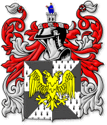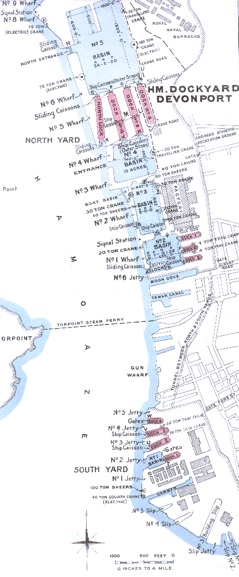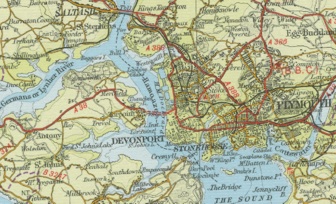

Devonport Information
Back to: Goodmans In Cornwall & Devon Map
Back to: Plymouth Location Map
You may need to expand and/or scroll this page.
See also: Plymouth Information
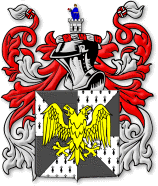
Amassing Troops (1890)
Robert Waters’ 1690 map (above) & plan (below)

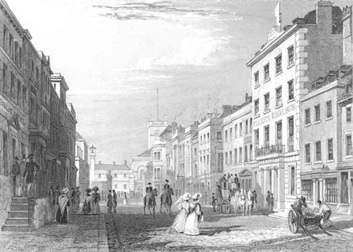
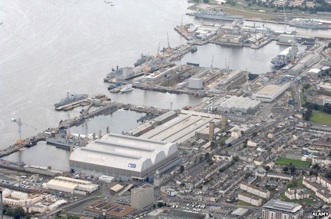

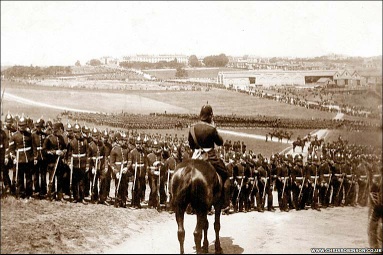
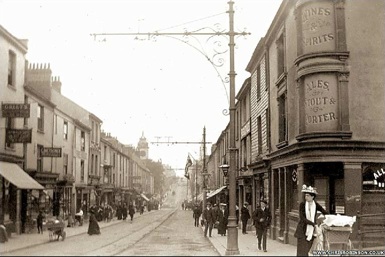
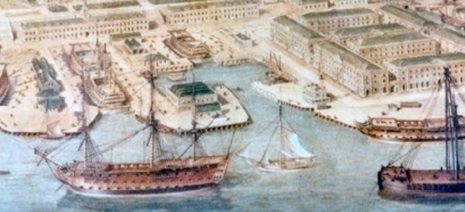
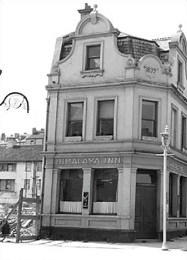
William Street (1920)
Main Entrance (1870’s)
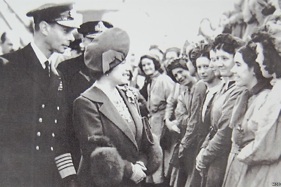

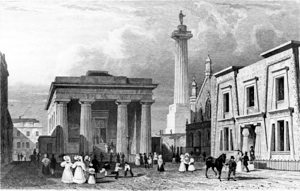
Layout (1909)

(click for enlargement)



Earliest Military Submarines Being Guarded
(click for enlargement)
Mainly Protestant England in 1688 was worried that King James was going to increase the power of the Roman Catholic Church. Eminent people then invited William III of Holland (Orange) to invade. At first he wouldn’t but agreements were signed and he landed a vast force at Brixham in Devon. Immediately commanders all over the country defected to William in what became the brief Glorious Revolution. He knew that mainland Europe still had designs on England and so he decided to fortify the Royal Navy. At this time the navy could easily be overwhelmed and so William asked Edmund Dummer to construct a very large new naval base on the South coast. Stoke Damerel was chosen. It was planned superbly and became known as Plymouth Dock however the name implied it was an underling to Plymouth itself. They demanded their own name and so took the name of the county: Devonport. Edmund introduced innovations that were to set the standards for the rest of the world. The fleet needed to be very large very quickly. The vast array of factories fed the docks and all were designed for efficiency and flexibility whether building new, re-arming or complete over-haul. Click (left) for Robert Waters’ original map.
As the centuries passed the docks were improved and site extended further and further north up the coast of the Tamar. However Dummond’s designs were so good that the original docks remained in use for hundreds of years. Slip No1, built in 1774 and roofed in 1814, survives unchanged to this day.
In 1901 Britain purchased the design from America for its first war submarine, Holland 1, which was launched in Barrow-in-Furness in 1902. This was kept at Gosport until being moved to Devonport in 1913. Britain built 72 subs against the Germans 22. However their tactics were cruelly effective at destroying British shipping.
In March 1931 an expired American submarine O-12 was renamed The Nautilus and was fitted out by the Australian Sir Hubert Wilkins. Having crossed the Atlantic unfortunately it had to be repaired at Devonport before its attempt at scientific experiments during the very first crossing under the North Pole. While there Prince Of Wales, Edward VIII, Lady Astor and TE Lawrence visited. The sub never made it far under ice but some experiments were made. It was sunk deliberately in a Norwegian fjord on 30th November. This is not to be confused with nuclear submarine USS Nautilus, active 1954-1980, which is celebrated as the first sub to cross under the North Pole in August 1958.
Sadly most of Devonport’s original buildings were destroyed by constant German bombing from 1941 onwards.
Royal Navy statement in 2015: This is the largest naval base in Western Europe, it has been supporting the Royal Navy since 1691. The vast site currently covers more than 650 acres, has 15 dry docks, four miles of waterfront, 25 tidal berths and five basins. The base employs 2,500 Service personnel and civilians, supports around 400 local firms and generates around ten per cent of Plymouth’s income.
Ordanance Survey Map
Devonport Naval Heritage Centre
It is possible to visit some non-military parts in small groups and are currently free. See DNHC.
